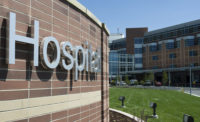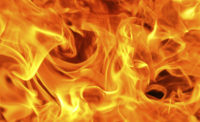Many fire departments in U.S. lack safety essentials, according to NFPA
 Firefighters in many fire departments across the U.S. lack basic health and safety protections, adding unnecessary risks to an already risky occupation, according to an assessment released last week by the National Fire Protection Association (NFPA). Inadequate training, insufficient safety equipment and the lack of basic fitness and health programs were among the findings of the The Third Needs Assessment of the U.S. Fire Service, which compared the current needs of America's fire departments to those identified in assessments done in 2001 and 2005.
Firefighters in many fire departments across the U.S. lack basic health and safety protections, adding unnecessary risks to an already risky occupation, according to an assessment released last week by the National Fire Protection Association (NFPA). Inadequate training, insufficient safety equipment and the lack of basic fitness and health programs were among the findings of the The Third Needs Assessment of the U.S. Fire Service, which compared the current needs of America's fire departments to those identified in assessments done in 2001 and 2005.
The report looked at staffing, training, certification, wellness/fitness, PPE, the ability to handle unusually challenging incidents, and communications and new technologies, among other other things.
Key findings:
• Nearly half (46 percent) of all fire departments that are responsible for structural firefighting have not formally trained all their personnel involved in structural firefighting, down from 55 percent in 2001 and 53 percent in 2005.
• Seven out of ten (70 percent) fire departments have no program to maintain basic firefighter fitness and health, down from 80 percent in 2001 and 76 percent in 2005.
• Nearly half (46 percent) of all fire department engines and pumpers were at least 15 years old, down from 51 percent in 2001 and 50 percent in 2005.
• Half (52 percent) of all fire departments cannot equip all firefighters on a shift with self-contained breathing apparatus (SCBA), down from 70 percent in 2001 and 60 percent in 2005.
• Two out of five (39 percent) fire departments do not have enough personal alert safety system devices (PASS) to equip all emergency responders on a shift, down from 62 percent in 2001 and 48 percent in 2005.
• Except for cities protecting at least 250,000 population, most cities do not assign at least four career firefighters to an engine or pumper and so are probably not in compliance with NFPA 1710, Standard for the Organization and Deployment of Fire Suppression Operations, Emergency Medical Operations, and Special Operations to the Public by Career Fire Departments, which requires a minimum of four firefighters on an engine or pumper.
The goal of the project was to identify major gaps in the needs of the U.S. fire service and to determine if the Department of Homeland Security Federal Emergency Management Agency’s (DHS/FEMA) Assistance to Firefighters Grant (AFG) programs are continuing to reduce the needs of fire departments.
“The progress that has been made nationally by well-targeted grants is encouraging, but there is more work to be done to ensure fire departments across the country are sufficiently prepared to protect their communities,” said NFPA President James M. Shannon.
The NFPA says needs have declined in some areas -- like PPE and firefighting equipment, because those resources have received the most AFG funding. Innovative technologies like thermal imaging cameras are coming into greater use.
Declines in needs that received much smallers shares of AFG funds -- like trainign -- have been more modest. Still other areas of need, such as apparatus, stations, and the staffing required to support the stations, have seen either limited reductions in need (e.g., apparatus needs in rural areas) or no reductions at all (e.g., adequacy of stations and personnel to meet standards and other guidance on speed and size of response).
Fire prevention and code enforcement needs have not shown any improvement over the past decade. Neither has the ability of departments to handle certain types of challenging incidents, such as homeland security scenarios (structural collapse and chem/bio agent attack) and large-scale emergencies (a wildland/urban interface fire or a major flood).
The full report and state reports are available at www.nfpa.org/needsassessment.
About the National Fire Protection Association (NFPA)
NFPA is a worldwide leader in fire, electrical, building, and life safety. The mission of the international nonprofit organization founded in 1896 is to reduce the worldwide burden of fire and other hazards on the quality of life by providing and advocating consensus codes and standards, research, training, and education.
Looking for a reprint of this article?
From high-res PDFs to custom plaques, order your copy today!








